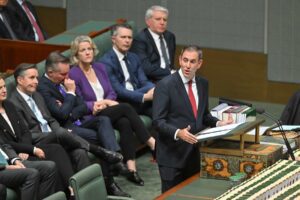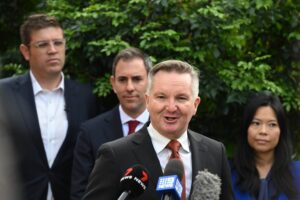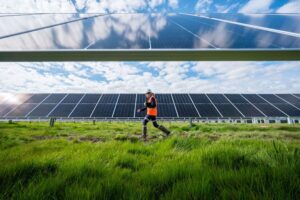The federal government has given environmental approval to a 400MW wind farm proposed for development in central Queensland by French giant Neoen, on the same day as it effectively closed the door on a nearly 300MW project proposed by Ark Energy for the state’s far north.
Neoen’s aptly named Mount Hopeful Wind Farm, located 65km west of Gladstone, was referred to the federal government’s Environment Protection and Biodiversity Conservation Act at the end of 2021, and given the green light on Friday.
The project had already secured state approvals and, in December 2022, signed a power purchase agreement for more 65 per cent of its output with the Queensland government-owned generation company Stanwell Corporation.
At the time, Stanwell CEO Michael O’Rourke said the deal with the Mount Hopeful wind farm would help provide renewable energy to its commercial and industrial customers as well as “upskilling and training pathways for our people.”
In a statement on Saturday, federal environment minister Tanya Plibersek said the project had been approved with strict conditions to protect the southern and central greater glider, southern yellow-bellied glider, koala and northern quoll.
Neoen welcomed the approval as a “significant milestone” for the Mount Hopeful wind farm and a result of the collaborative efforts of all involved.
“Our project team has been working closely with the federal and state government authorities, specialist environmental consultants, local councils and communities throughout the development stage,” said Vivienne Roberts, state leader for Queensland at Neoen.
“We will continue this close engagement and work to realise the best possible outcomes for the environment and the local communities as we prepare the project for construction stage.”
Plibersek says her department has now ticked off 46 renewable energy projects and has a record 130 renewables awaiting a decision in the approval pipeline.
“Years of political fights over climate change have cost Australia big time. It meant emissions were higher for longer. It put renewable energy projects years behind,” the minister said.
“We want to unlock Australia’s potential to be a world leader in renewable energy. …As well as lower emissions, it means cheaper, cleaner power for all Australians.”
Of course, not all projects in that very well populated pipeline will make it through. Ark Energy’s 294MW Wooroora wind farm in far north Queensland was withdrawn from the EPBC process by the company on Friday, after waiting nearly three years for a decision.
See: Major wind farm withdrawn after more planning delays, downsizing, name changes and fierce opposition
Wooroora Station wind farm, formerly known as the Chalumbin wind farm, had been dogged by controversy over its size and potential environmental impacts, which was fanned by known anti-renewables agitators and politicians with no prior interest in nature conservation and no connection to the region.
In a statement last week, Ark said it had worked hard to put forward a proposal with minimum environmental impacts, but had “received information” from the Department of Climate Change Energy Environment and Water (DCCEW) that it would not be approved.
According to the Guardian, Plibersek said she ultimately decided the effects of the Wooroora project on nature were “too great and could not be accommodated.” She is also reported to have said that the project would have cleared one of the last remaining areas of wet sclerophyll forest.
“It provides a vital habitat for many birds, plants and animals, including the spectacled flying-fox and the northern greater glider [Petauroides minor],” the minister said.
Ark cut the project’s size in September of last year in half, to 42 wind turbines, to move it further away from the Wet Tropics of Queensland World Heritage Area and to address concerns about the impact on the magnificent brood frog, masked owl and northern greater glider.
The company also changed the project’s name, to reflect the name of the pastoral station that was to host it, and to remove any confusion – or misrepresentation – that that the project was being built on or near Chalumbin Hill, a sacred site to the original owners of the land, the Jirrbal Peoples.
“Some opponents took advantage of the former name to spread misinformation and make unsubstantiated claims about what kind of habitat and species are in the project area and therefore the environmental impacts of the development,” Ark Energy’s head of projects in Queensland Anthony Russo said at the time.
“The reality is the project is NOT within the World Heritage area and it is important that the project is represented accurately and the public have the facts.”










